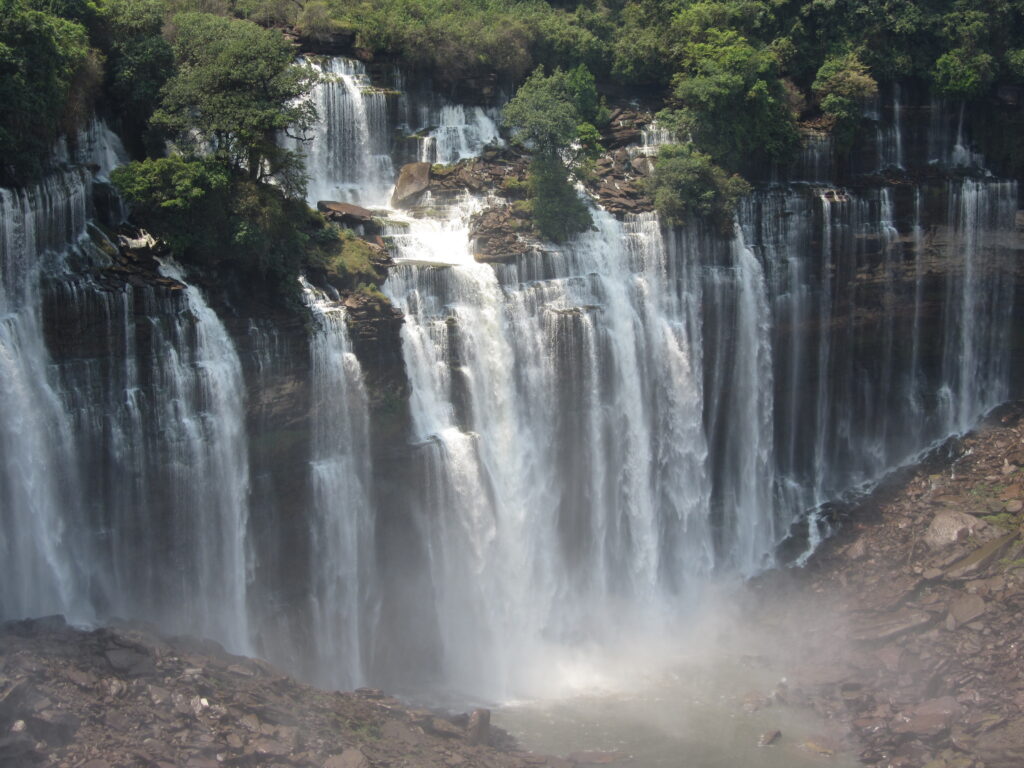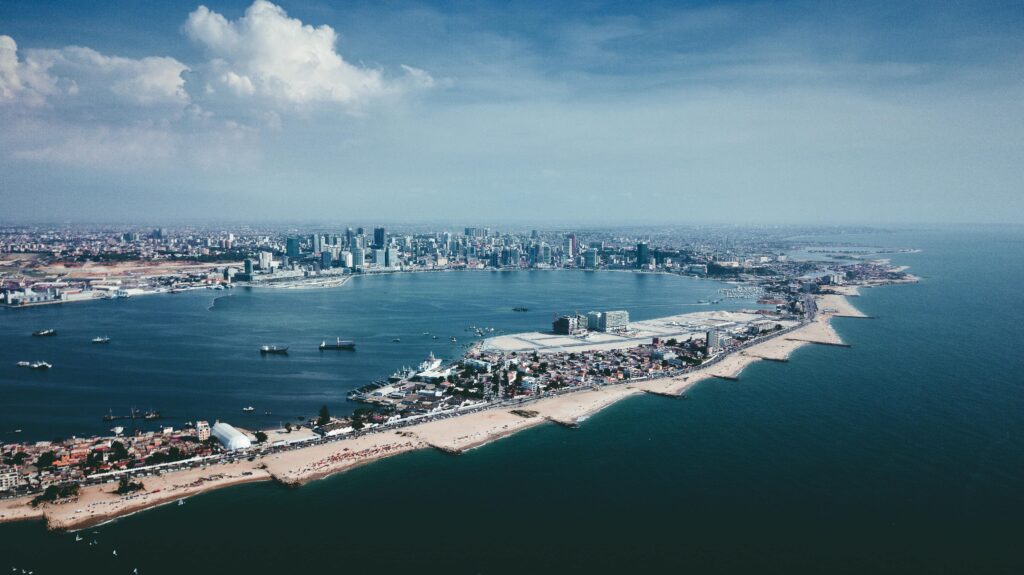Quick facts about Angola:
- Population: Approximately 34 million people.
- Capital: Luanda.
- Official Language: Portuguese.
- Other Languages: Various indigenous languages are spoken, including Umbundu, Kimbundu, and Kikongo.
- Currency: Angolan Kwanza (AOA).
- Government: Unitary presidential republic.
- Major Religion: Christianity (predominantly Roman Catholic, with a significant Protestant population), alongside traditional African beliefs.
- Geography: Located in southwestern Africa, bordered by the Democratic Republic of the Congo to the north, Zambia to the east, Namibia to the south, and the Atlantic Ocean to the west. Angola features diverse landscapes, including coastal plains, savannas, and highlands.
Fact 1: Angola is the birthplace of dreadlocks
The practice of wearing dreadlocks is believed to be rooted in ancient traditions and is associated with spiritual and cultural significance.
The hairstyle is not only a form of personal expression but also has connections to identity, heritage, and resistance. In Angola, as in other parts of Africa, dreadlocks have been worn for centuries, and they often symbolize strength, pride, and a deep connection to ancestry. The historical significance of dreadlocks in Angola has influenced broader cultural movements, including the Rastafarian movement, which draws inspiration from African traditions and promotes natural hair and cultural identity.

Fact 2: Cuba has played an important role in Angola’s history
Cuba has played a significant role in Angola’s history, particularly during the Angolan Civil War, which lasted from 1975 to 2002. After Angola gained independence from Portugal in 1975, the country was embroiled in a conflict between various factions, primarily the MPLA (Popular Movement for the Liberation of Angola) and UNITA (National Union for the Total Independence of Angola).
Cuba supported the MPLA by sending thousands of troops to Angola, alongside military advisors and resources. Cuban forces helped the MPLA establish control over key territories and played a crucial role in combating UNITA and South African forces, which were involved in the conflict as part of a broader regional struggle during the Cold War.
The Cuban involvement in Angola had lasting effects on the country’s development and post-war reconstruction. Even after the war ended, the ties between Cuba and Angola continued, particularly in the fields of health and education, with Cuban medical professionals and educators contributing to Angola’s rebuilding efforts.
Fact 3: Angola has some of the largest waterfalls in the world
Angola is home to several impressive waterfalls, including some of the largest in Africa. The most notable is the Kalandula Falls, located near the town of the same name. Kalandula Falls is approximately 105 meters (344 feet) high and 400 meters (1,312 feet) wide, making it one of the largest waterfalls by volume in Africa. The falls are particularly spectacular during the rainy season when the water flow is at its peak, creating a stunning display of cascading water surrounded by lush vegetation. Another significant waterfall is the Pungu À Ngola Falls, which also boasts impressive dimensions.
Note: If you are planning to travel independently, check if you need an International Driving Permit in Angola to rent and drive a car.

Fact 4: The name of the country comes from the title of the Ndongo kings
The name “Angola” is derived from the title “Ngola,” which was used by the kings of the Ndongo kingdom, a powerful state that existed in the region before Portuguese colonization. The Ndongo kingdom was one of the prominent pre-colonial states in Angola, and its capital was located near present-day Luanda.
When the Portuguese arrived in the late 15th century, they encountered the Ndongo kingdom and began to use the title “Ngola” to refer to the land and its rulers. Over time, this title evolved into “Angola,” and it became the name of the country when Angola gained independence from Portugal in 1975.
Fact 5: Luanda was founded by the Portuguese
Luanda, the capital city of Angola, was founded by the Portuguese in 1575, initially named “São Paulo da Assunção de Loanda.” It served as a key port for the Portuguese during the colonial period, facilitating trade, especially in enslaved people, ivory, and other goods.
In recent years, Luanda has gained a reputation as one of the most expensive cities for expatriates globally. Factors contributing to this high cost of living include limited housing availability, a booming economy driven by oil and gas industries, and significant demand for goods and services, which often exceed local supply. According to various reports, including those from Mercer and other expat surveys, the cost of living in Luanda is influenced by high rental prices, particularly in desirable neighborhoods, as well as expensive imported goods.

Fact 6: Africa’s richest woman lives in Angola
She is the daughter of former Angolan president José Eduardo dos Santos, who ruled the country from 1979 to 2017. Isabel dos Santos has amassed her wealth through various business ventures, including significant investments in telecommunications, banking, and oil, among other sectors.
Her most notable investments include a stake in Unitel, one of Angola’s largest telecommunications companies, and significant holdings in other businesses across Africa and Europe. Despite her financial success, Isabel dos Santos’s wealth has been a subject of controversy, particularly regarding allegations of corruption and mismanagement tied to her family’s political connections.
As of recent years, her assets have faced scrutiny, and legal challenges have emerged, especially following her father’s presidency.
Fact 7: The giant black antelope endemic to Angola was thought to be extinct
The giant black antelope, known as the “giant sable antelope” (Hippotragus niger variani), is a species endemic to Angola. For many years, it was thought to be extinct due to extensive hunting and habitat loss during the Angolan Civil War, which lasted from 1975 to 2002. The antelope is characterized by its striking black coat and impressive long, curved horns.
However, in the early 2000s, conservationists were thrilled to discover a small population of these antelopes in the wild, specifically in the Cangandala National Park and surrounding areas. This discovery sparked renewed efforts for their protection and conservation. The giant sable antelope is now a symbol of Angola’s wildlife heritage and has become a focal point for conservation initiatives aimed at preserving its habitat and increasing its population.

Fact 8: Angola has one of the youngest populations in the world
Angola has one of the youngest populations in the world, with a significant proportion of its citizens under the age of 25. Approximately 45% of the population is under 15 years old, reflecting high birth rates and a relatively low median age, which is around 19 years. This youthful demographic is a result of several factors, including historical trends of high fertility rates and improvements in healthcare leading to lower infant mortality.
The presence of a young population presents both opportunities and challenges for Angola. On one hand, it offers the potential for a vibrant workforce and innovation, driving economic growth and social change. On the other hand, it poses significant challenges, including the need for adequate education, job creation, and healthcare services to support this growing demographic.
Fact 9: Angola has many national parks and protected areas
Notable among them is Iona National Park, located in the southwest, known for its stunning landscapes and unique wildlife, including desert-adapted elephants. Kissama National Park, near Luanda, is one of the country’s oldest parks and focuses on wildlife conservation, including the reintroduction of African elephants and giraffes Cangandala National Park is critical for the conservation of the giant sable antelope.

Fact 10: Angola has problems with landmine clearance
Angola faces significant challenges with landmine clearance, a lingering consequence of its prolonged civil war, which lasted from 1975 to 2002. During the conflict, millions of landmines were planted across the country, particularly in rural areas and former battlefields, posing serious risks to civilians and hindering agricultural development.
Efforts to clear these landmines have been ongoing, supported by both international organizations and local initiatives. However, the process is slow and costly, with large areas still affected. The presence of landmines not only endangers lives but also restricts access to fertile land, impeding economic growth and food security.

Published September 22, 2024 • 7m to read





